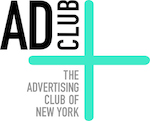The Age of Advertising Creativity in a Time of Disruption

By Charlene Weisler
Originally Posted on MediaVillage.
We are entering the age of advertising creativity and while it may feel disruptive and challenging, it is also exciting and inspiring. That was the message yesterday from the Ad Club’s Media:Now conference.
As with other parts of the media industry, agencies are experiencing transformative change. It is no longer enough to ply spots and dots in siloed media. Agencies that succeed are employing a range of innovative, creative driven solutions to better connect with their consumers and, ultimately, reinforce the brand personality and drive sales. “We need to reach out beyond the traditional media plan,” explained Rob Rakowitz, Director of Global Media for Mars, Inc.
Jack Myers, Chairman of MediaVillage and a noted media ecologist, spoke of the future-looking trends impacting our industry. “We are entering the golden age of advertising creative,” he stated. “The economics around content are challenged and questioned. We are dealing with a lot of issues in an age of algorithms, data science, ad-blocking, ad clutter and ad avoidance. If we make it all science and too little art, advertising becomes moot and irrelevant. The emphasis on ad creative is pivotal.”
But concentrating on ad creative is challenging. Alison Tarrant, Executive Vice President, Client Partnerships Group, NBCUniversal explained, “We have been in the custom content space for many years. What has changed is how we need to adapt high quality TV creative to advertising and be nimble across platforms. How we can be faster, cheaper, better. Being nimble in the market is one of our biggest challenges. The need to develop creative at a high production level is another big challenge.”
But there are many success stories; companies such as Mars and Mondelez presented their efforts on creating content that serves both the consumers’ need for entertainment and engagement as well as the advertisers’ need for reinforcing and strengthening the brand personality and maximizing ROI.
Mars – Reaching Out Beyond the Traditional Media Plan
“We at Mars are expanding role of media beyond mass reach,” Rakowitz explained. To do this, the company needed to get a sense of the “Mars journey” – the blurring of lines between commerce, data and creative and driving the idea of more convergent media. “How it [effects] content, weaves into tech and how it drives commerce,” he added. “We look at outcomes, not just outputs to drive brand growth.”
Mars contends with a range of “mores” — more data, platforms and disruptions. “It is a confusing, exciting, exhilarating time to work in this space, trying to make sense of it all,” Rakowitz admitted. Some examples of how Mars is serving change include its work in creating online vignettes for Twix and cooking demonstrations to show the value of adding grains to a meal for a specific Uncle Ben’s packaged rice product. Rakowitz says Mars strives for two vectors: “Timeless and timely. Timeless tells a consistent brand story that is enduring and memorable and timely brings in the moment and driving talk ability.”
Mondelez – Building Dragons, Not Unicorns
Mondelez’ Chief Media and eCommerce Officer B. Bonin Bough demonstrated that even an established brand like Oreo can expand its brand story and make it relevant and valuable to today’s consumer. “Disruption sits on the shoulder of giants,” Bough explained. “You needed Hilton to get to Airbnb and Henry Ford to Uber vs taxis.” In the case of Oreo, Mondelez allowed customers to design their own custom packaging and then directly shipped the product to the consumer. “It is all about communicating to customers. Even a cookie can sit in the chain from disruption to wonder,” he added. “It could change a brand forever.”
Oreo celebrated Gay Pride in 2012 with Rainbow icing layers demonstrating that a cookie could have a point of view on culture. In 2014 Mondelez used a 3-D printer to print a customized Oreo based on current trends. “We are planting the seed of innovation and building ‘mass custom,’” he said. “There is a huge opportunity for disruption.”
But finding and nurturing the right talent is a big challenge. Bough admits that, “Right now everyone is looking for unicorns, but few unicorns survive past five years. We have a unique opportunity to build dragons, not unicorns. We need to reskill our entire organization in order to disrupt in a large corporation. We need to find a coalition of the willing: Those in the organization who want to bring about change. We need intra-preneurs, and to celebrate those in organizations who bring about change like we celebrate outside entrepreneurs.”
Conclusion
The disruptive future looks bright for companies like Mars and Mondelez. But more needs to be done. As Jack Myers concluded, “We need to bring more young people and more multiculturalism into our business. Our business must reflect the audience we are talking to.”
Image at top courtesy of Corbis. The opinions and points of view expressed in this commentary are exclusively the views of the author and do not necessarily represent the views of MediaVillage/MyersBizNet management or associated bloggers.
